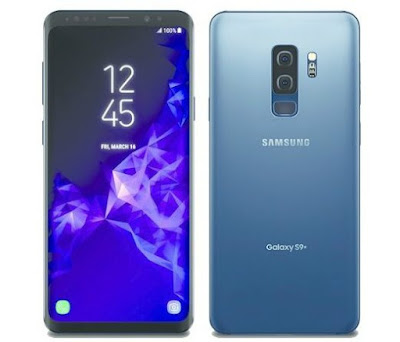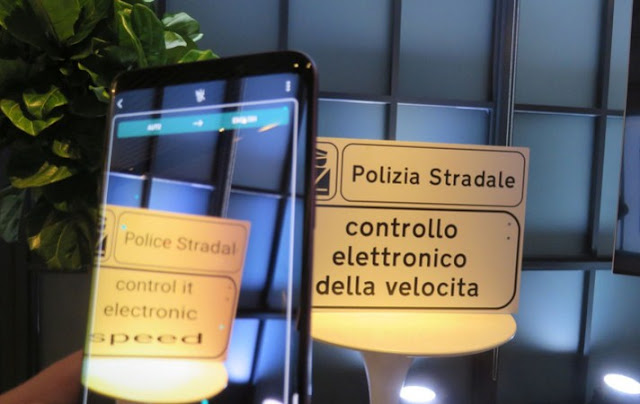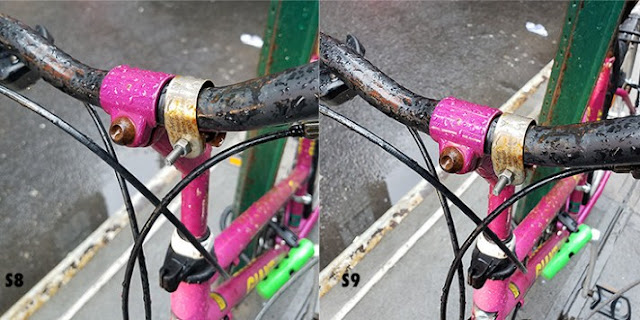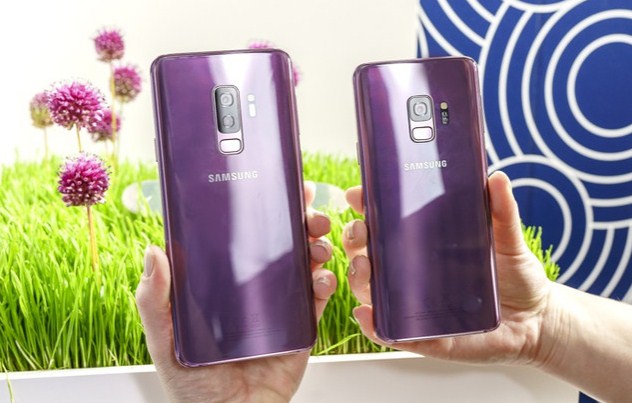The Samsung Galaxy S9+ ($839.99 as tried) is the best phone available. It hasn't been rethought from a year ago's model. There's no radical new component that will send you racing to the store, no adjustment in the amusement or move in worldview. Be that as it may, it has the best screen, the best network, the best speaker, and three of the best cameras accessible. There's no motivation to throw away your year old cell phone for a S9+, yet in the event that you're looking for another phone, this is the one to get, and our Editors' Choice.
Note this is a survey of the Galaxy S9+, which we think beats the Galaxy S9 in light of the fact that it gives you double back cameras, more RAM, and a greater battery. That is a change from a year ago, when we favored the littler S8 on the grounds that we didn't feel the S8+ separated itself enough.
A Little Better Every Day
The Galaxy S9+ looks a great deal like the Galaxy S8+, to the point that it's hard to disclose to them separated. Like the S8+, the S9+ is a smooth phone with bended edges and a screen falling down the two sides of the bended glass. There's somewhat less best and base bezel than there was on the past model. Indeed, there's as yet a devoted Bixby catch on the left, prepared to dispatch you into an optional home screen. Turn the phone over and you'll see a distinction: two cameras rather than one, and a unique finger impression scanner underneath the cameras, as opposed to alongside it.
That unique mark scanner area is a tad of a center finger to the individuals who grumbled about the S8's scanner, since it's no better. The S8's scanner expected you to look about the back of the phone, potentially putting your finger over the camera focal point, that is as yet the case. The arrangement now is simply to slide your finger up from the base instead of in from the side.
The Galaxy S9 measures 5.8 by 2.7 by 0.3 inches (HWD) and weighs 5.8 ounces. The Galaxy S9+ measures 6.2 by 2.9 by 0.3 inches and weighs 6.7 ounces. Both are marginally shorter, more extensive, and heavier than their antecedents (separately 5.9 by 2.7 by 0.3 and 5.5 ounces, and 6.3 by 2.9 by 0.3 inches and 6.1 ounces), however less that you take note. The S9+ is clearly bigger than the S9, however it's smaller than the iPhone 8 Plus (3.1 inches), making it less demanding to hold. The phones come in dark, blue, or purple.
On the base, you locate the same USB-C port and conventional 3.5mm earphone jack as on the S8+. The phone comes in 64, 128, and 256GB capacity forms, and there's additionally a microSD card space. It bolsters both quick and remote charging and it's IP68-ensured water safe. Up until this point, so much like a year ago's phone.
Eventually, however, everything's somewhat better. Begin with that screen, 6.2 crawls on the S9+, and 5.8 creeps on the S9. As indicated by Ray Soneira of DisplayMate Labs, it's somewhat brighter, has better programmed brilliance settings, and has preferable hues over a year ago's phones. The most sensational new element is a client settable white point, on the off chance that you think the screen is excessively blue, well, you can modify that.
The phone's double speakers, one in the earpiece and one on the base, direct out sound that is discernibly louder and more full than the Galaxy S8+. We got 90db of pink clamor at a six inch remove, rather than 83db on a Galaxy S8+. That influences media playback, as well as the speakerphone. The Galaxy S8+ gloats the best call quality in the business; the Galaxy S9+ is similarly as great, and now louder.
The phone underpins both voice over-LTE and Wi-Fi calling, in spite of the fact that you may require a transporter particular unit to get those highlights. The opened model backings Wi-Fi approaching T-Mobile and Sprint, yet you'll require a transporter marked unit for Wi-Fi approaching AT&T and Verizon.
Hot Chips
The Galaxy S9+ runs Android 8.0 Oreo on the primary Snapdragon 845 processor we've found in the US. This model has 6GB of RAM, while the littler S9 has 4GB. The Snapdragon 845 has four centers running at 2.8GHz and four at 1.7GHz. It doesn't seem to convey greatly more CPU energy to the table, yet the enhancements on illustrations, LTE, and Wi-Fi are very observable.
The Snapdragon 845 benchmarks superior to anything some other Android phone; how it contrasts and the iPhone relies upon which benchmark you're utilizing. On Geekbench, which centers around CPU execution, the iPhone X beats the S9+ with scores of 4269 single-center and 10403 multi center, contrasted and the S9+'s 2278 and 8379. Be that as it may, Antutu demonstrates the contrary outcome: the Galaxy S9+ got 267,233 contrasted and the iPhone X's 233,592, to a great extent in view of a superior 3D execution score. Cross stage benchmarks are not unpleasantly helpful. What's more, on PCMark, well, our score of 7273 is like the Pixel 2 phones, in spite of the fact that it's recognizably higher than the 6800 we got on the Galaxy S8.
Program benchmarks demonstrate an unobtrusive change over Snapdragon 835-based phones. Those normally get around 63 to 65 on the Jetstream Javascript benchmark and 250 or so on Browsermark; here, we got 69.97 on Jetstream and 270 on Browsermark.
Designs benchmarks contrasting the S9+ and other Android phones, however, are delighting. On the GFXBench Car Crash test, the S9+ got 35fps offscreen, while Snapdragon 835 phones just get 24 to 25 fps. That is an extremely pleasant execution knock.
The phone has a Category 18 LTE modem that can hit greatest hypothetical rates of 1.2Gbps, 20 percent quicker than the past age of top of the line phones. We tried the opened variation, and were glad to see that it has every one of the groups utilized by every one of the US transporters, including (for AT&T, T-Mobile, and Verizon) the new 5GHz LAA band that as of late gave us paces of more than 500Mbps on T-Mobile. The phone has 4x4 MIMO recieving wires on groups 2, 4, 7, 30, 41, and 66. (In case you're interested about the full LTE band list, including wandering groups utilized for the most part in different nations, it's 1, 2, 3, 4, 5, 7, 8, 12,13, 18, 19, 20, 25, 26, 38, 39, 40, 41, 46, 66, 71.)
There's uplifting news here for all bearers. The phone can bolster 12 surges of information to past gadgets' 10, and can complete 4x4 MIMO on three groups at the same time contrasted and the past gadgets' two. That implies greater adaptability to crush more noteworthy speeds out of every cell site on each bearer.
On AT&T, 4x4 MIMO on Band 30 is new. On Sprint, the S8+ needs 4x4 MIMO on the basic Band 41, so you'll see considerably speedier speeds on a S9+. On T-Mobile, the S9+ acquires the new rustic Band 71 for expanded scope, which isn't on the S8+. The S7 doesn't have both of these highlights, and no iPhone has them, either. At the point when a transporter SIM is placed in the opened phone, the phone adjusts to whatever that bearer's groups and collection methodologies are.
To test RF, we brought the S9+ and a Galaxy Note 8 perfectly Mobile cell site of checked quality. We improved flag and dormancy on the S9+ than on the Note 8. Presently, that could be equipment, or it could be programming, and we intend to investigate this further, however doubtlessly that we're talking first class LTE execution.
We were likewise wonderfully shocked by the S9+'s stellar Wi-Fi execution when contrasted and the S8+ on the 5GHz band. In great flag conditions on a 150Mbps symmetrical association, we got 130 to 150Mbps down on the S8+, yet just 70 to 80Mbps up. On the S9+, we got 135 to 150Mbps up. Furthermore, as we went more remote from the switch and through dividers, the S8+'s association rotted before the S9+'s did: With an average connection, we got 77Mbps down and 40Mbps up on the S8+, yet a strong 154Mbps down and 130Mbps up on the S9+.
To the extent battery goes, the S9+ has a 3,500mAh cell. It surpassed our 10 hour gushing YouTube video, with five percent life, which bodes exceptionally well for battery life. We'll post more battery comes about as we run them.
Android insightful, Samsung's augmentations to Google's working framework here are indistinguishable to those from a year ago. Past the camera modes, which we'll talk about underneath, the S9+ has Samsung's "edge" usefulness to drag in gadgets from the side of the screen, and backings Samsung's DeX docking stations to transform the phone into a work area PC. The two highlights are helpful, yet presumably won't be utilized as regularly as Samsung might want.
Brighter Vision
The Galaxy S9+ has two essential 12MP cameras, stacked over each other on the back. Both the S9 and S9+ have new, double gap focal points that snap from f/2.4 or f/1.5 relying upon lighting conditions. At light levels under 100 lux fundamentally indoor lighting, they'll pop open to f/1.5, giving all the more light access. You can likewise control the change physically in the camera's Pro mode. You can really observe the iris open up in the event that you take a gander at the camera.
The forward looking f/1.7, 8MP camera is totally indistinguishable to the Galaxy S8's in our testing, despite the fact that it has another wide selfie mode that consolidates selfie with a halfway display, and a product worked selfie bokeh mode.
From an equipment point of view, the S9+ conveys on its guarantees. Its splendid focal point and sensor convey pictures that surpass different cell phones in diminish light, and on-sensor self-adjust locks onto subjects rapidly. Be that as it may, the product utilizes some exceptionally forceful honing we're not huge devotees of.
On the S9+, the double opening focal point is the best one. The last one is a f/2.4 focal point at 2x zoom. Both have optical picture adjustment. The camera UI is somewhat tricky and sticky. I'm certain this will get worked out in a firmware refresh, however looking over the changed camera modes, Pro, Auto, Slow-mo, and so on. Some of the time bounces ahead and here and there feels stilted, which is disappointing.
The thought behind the double opening camera alternative is basic: crisper pictures when shooting in brilliant light with a f/2.4 prime, and lower ISOs in exceptionally diminish conditions with f/1.5. A f/1.5 focal point catches around 2.6 times the light as a f/2.4.
Obviously, you'll likely contrast it and different handsets instead of committed cameras. The Note 8 dons a f/1.7 prime, giving the S9+ a more unassuming 30 percent advantage in social event light. The iPhone 8, 8 Plus, and X have a f/1.8 primary focal point, which implies the S9+ eats up around 45 percent all the more light. This converts into either a shorter shade speed, bring down ISO, or mix of both when working in diminish light. Cell phone camera picture quality endures at high ISO settings, so this is an unmistakable in addition to while snapping pics of your supper in a favor eatery, or an injection of your bestie at the trendiest mixed drink relax around the local area.
A brighter focal point is awesome, however because of some product decisions by Samsung, the genuine outcomes are blended. At its default, JPG yield setting pictures are altogether oversharpened. Close examination demonstrates odd antiques, particularly in high-differentiate regions, say a dim question against a brilliant sky, a typical circumstance in scene and engineering photography. Notwithstanding when seen at screen determination you can see unobtrusive coronas in these territories. This is fixable in programming.
It's not an issue with the sensor. We took a gander at Raw photographs as well and they look awesome. Investigate the correlation above, at a pixel level, with the JPG yield at the left, a for the most part untouched Raw in the middle (we dialed down the introduction by a half-stop to better match the JPG), and a Raw handled to taste (+25 Contrast, - 40 Highlights, +35 Shadows, - 25 Blacks, and +15 Clarity) in Lightroom at the far right. You can get more characteristic photographs, with fresh lines and without the as well sharp look, with a smidgen of preparing.
The impact is more articulated at bring down ISO settings. As we move to the high ISO go, the S9+ can be set physically up to ISO 800. We perceive how the honed pictures, combined with changes in the hidden sensor innovation, really convey more detail than the cameras from the S8+/Note 8 and iPhone 8/Plus/X. In any case, it's not only the JPG motor that is doing it, the Raw sensor yield from the S9+ demonstrates more detail and less commotion at ISO 800 than the Note 8 or iPhone 8 Plus principle cameras which implies it's additionally superior to those phones in diminish light.
While the S9's equipment is superior to anything any contending phone, Samsung's product decisions in JPG encoding mean the JPG yield from contending phones, including Samsung's own particular Note 8 and S8, the Google Pixel 2 XL, and the current year's iPhones, all look more common. We've incorporate a one next to the other examination of a picture of a similar subject above, with the S8+ on the left and S9+ on the right (click for a bigger rendition). Indeed, even at screen determination the distinction is clear, the S8+ catches a huge amount of detail, yet does as such without indicating unnatural edges. The S9 is crisper than genuine living, similar to it's pushing a clearness alteration slider the distance to one side.
Fortunately, genuine cell phone photgraphers can get around this. You can shoot in Raw and process photographs utilizing a phone or work area application. I'm a major aficionado of the film looks offered by VSCO, which is accessible for Android, yet there are many alternatives out there. Or on the other hand you can tune the JPG yield in the Pro camera mode to one of a few preset looks: Breezy, Vivid, Nostalgic, Soft, and Serene. Windy is nearer to what Samsung did with the S8 and Note 8 in shading tone, yet at the same time a bit excessively honed. Nostalgic, Soft, and Serene dial it route back, however they're more embellishment than an ordinary shooting look.
Recordings are pleasantly optically balanced out, both at 1x and 2x, in up to 4K at 60 outlines for each second. The gadget doesn't catch 4K HDR, however, and 4K60 catch is constrained to five minutes for each video.
Samsung additionally put memory directly under the picture sensor, a similar way Sony has, to empower 960fps moderate movement. The GS9+ can catch up to 20, 0.2 second clasps at that super moderate mo level; it needs a minute to flush the memory support out after each clasp. Since it's extremely hard to figure which 0.2 second you will need, the camera likewise has an auto distinguish mode where it begins recording ordinary video, and afterward kicks into super moderate mo when it identifies movement in the edge. The super slo mo cut turns into a short video, yet the GS9 likewise makes three 4MB feature GIFs that have considerably littler record sizes than the video, and are less demanding to share. That is some entirely awesome handholding for any individual who needs to post their ease back mo rapidly to informal communities.
I popped a few inflatables in moderate mo, and it worked fine. One thing to know about, however, is that the super moderate mo mode just records at 720p, and the pictures can be delicate in indoor lighting. The all the more light you have at this speed, the better.
The Uncanny Emoji Valley
Samsung's AR Emoji are a cross between Apple's animoji, which I haven't found in the wild for a considerable length of time, and the cartoonish Bitmoji, which are a terrible torment on the web. The thought is that they develop a custom toon character from your face that can coordinate your facial developments for photographs and recordings. The characters, however, live immovably in the uncanny valley, that dreadful place where there is to some degree practical dolls and zombie animals that influence you to recoil, not giggle.
When I made a character for myself, it at first didn't take a gander at all like me since it had the wrong hair and no glasses. Tweaking the hair shading, skin tone, and glasses helped a great deal, yet the liveliness still glided in that unpleasant domain amongst cartoonish and photorealistic. In the wake of reasoning on it for some time, the issue wasn't that the face didn't seem as though me, it's that the slight slackness and slack of the movement catch made the issue. That is a piece of why Apple's Animoji are all toon characters, which you don't expect human articulations from.
Subsequent to getting over the underlying stun, I understood that the AR Emoji aren't terrible at all when they're transformed into GIF stickers. The phone auto-creates a scope of GIFs from your picture, and keeping in mind that they're ludicrous, they aren't irritating, as should be obvious here.
You can likewise utilize the S9's movement catch ability with three toon characters and an assortment of Snapchat like covers for your selfies. They all move a little firmly, in light of the fact that the S9 doesn't have the 3D confront following camera the iPhone X has on its front. Marked Disney characters are coming, Samsung says, yet the activitys should get more liquid and versatile to urge.
Samsung's product story proceeds in the S9's new Bixby camera modes. Bixby is Samsung's catch-all term for AI programming highlights. It's a voice associate, an additional home screen with enlightening gadgets, and a bundle of canny camera modes. On the S8+, Bixby's camera modes distinguishes wine bottles and different items, peruses QR codes, and interprets dialects. On the S9+, you can include the calories sustenance and shop for cosmetics by putting it all over as a Snapchat-style channel.
The camera modes' quality fluctuates, however they all vibe like tricks you'll rapidly disregard. Lamentably, the most valuable one, dialect interpretation, doesn't function admirably on numerous dialects. It gave me a feeling of Spanish and French in tests, however completely flopped on Bengali, Hebrew, and Russian, despite the fact that it says it bolsters those dialects. The calorie counter mode is a great gathering trap and works shockingly well, however it's of constrained utility. At last, there's only nothing in Bixby that would influence you to purchase a phone, and little that is superior to a blend of Google Assistant and some outsider applications like Microsoft Translate or Bitesnap.
Correlations and Conclusions
I don't think the previous a year make an incredible development year for cell phones. That doesn't mean we're seeing awful phones, it just means we aren't seeing amusement evolving phones. With in-show unique mark sensors coming toward the finish of 2018 and 5G systems coming toward the start of 2019, we will see some genuine development soon. For the present, the S9+ just improves everything a smidgen.
It brings you double cameras, a major battery, and loads of memory for $839.99 opened. We feel that merits paying $120 more than you will for the littler S9, and it's short of what you'll pay for the Galaxy Note 8 or the iPhone X. Remote transporters are charging more for this phone, however unless you require Wi-Fi approaching AT&T or Verizon, you ought to get the opened model, it has no bloatware, better resale esteem, and backings all US bearer groups.
This is an astounding phone, if a candidly unexciting one. It's our Editors' Choice since it's the best at nearly everything that other Android phones do, and not a long way from the best at the rest (for the most part, camera JPEG encoding).
On the off chance that you have a Galaxy S8, it's difficult for me to contend that you hurl away it away for a gathering of significant yet to a great extent incremental changes. On the off chance that you have a Galaxy S7 or S6, then again, this is a noteworthy overhaul, particularly regarding associating with your bearer's quickest system. Contrasted and the Note 8, get the Note in case you will utilize the pen. Get a S9+ in the event that you aren't.
The S9+ doesn't change the "iPhone or Android?" analytics much. It puts the Galaxy line keeping pace with the iPhone 8 Plus as far as having double cameras, yet the tune continues as before. I lean toward the Galaxy line over iPhones at the present time since they have better radios, a genuine earphone jack, and what I believe is a more alluring structure factor, and the more I take a gander at the iPhone X score, the more I don't care for it. Many individuals still love iOS for its rich outsider applications and Apple's totally unmatched system of excellent administration and support. They're not off-base.
Other Android cell phones can totally bring a quality affair for less cash. They're likewise not exactly as great. The Google Pixel 2 XL, for example, does not have the GS9+'s optional camera, has a somewhat slower processor, a slower modem, and doesn't have as dazzling a screen. It does, notwithstanding, encode better JPEGs.
The Galaxy S9+ is the zenith of cell phone advancement at the present time. Like the Galaxy S8 did a year ago, it sets the bar for cell phone quality, and it will make life troublesome for organizations like Motorola and Sony that are likewise attempting to offer $700+ cell phones. In the event that you require a phone, cost is no question, you wouldn't utilize a pen, and aren't determined to an iPhone, this is the one for you.







Thank you for visiting. Please leave a comment or request the computer or laptop you want to review. ConversionConversion EmoticonEmoticon